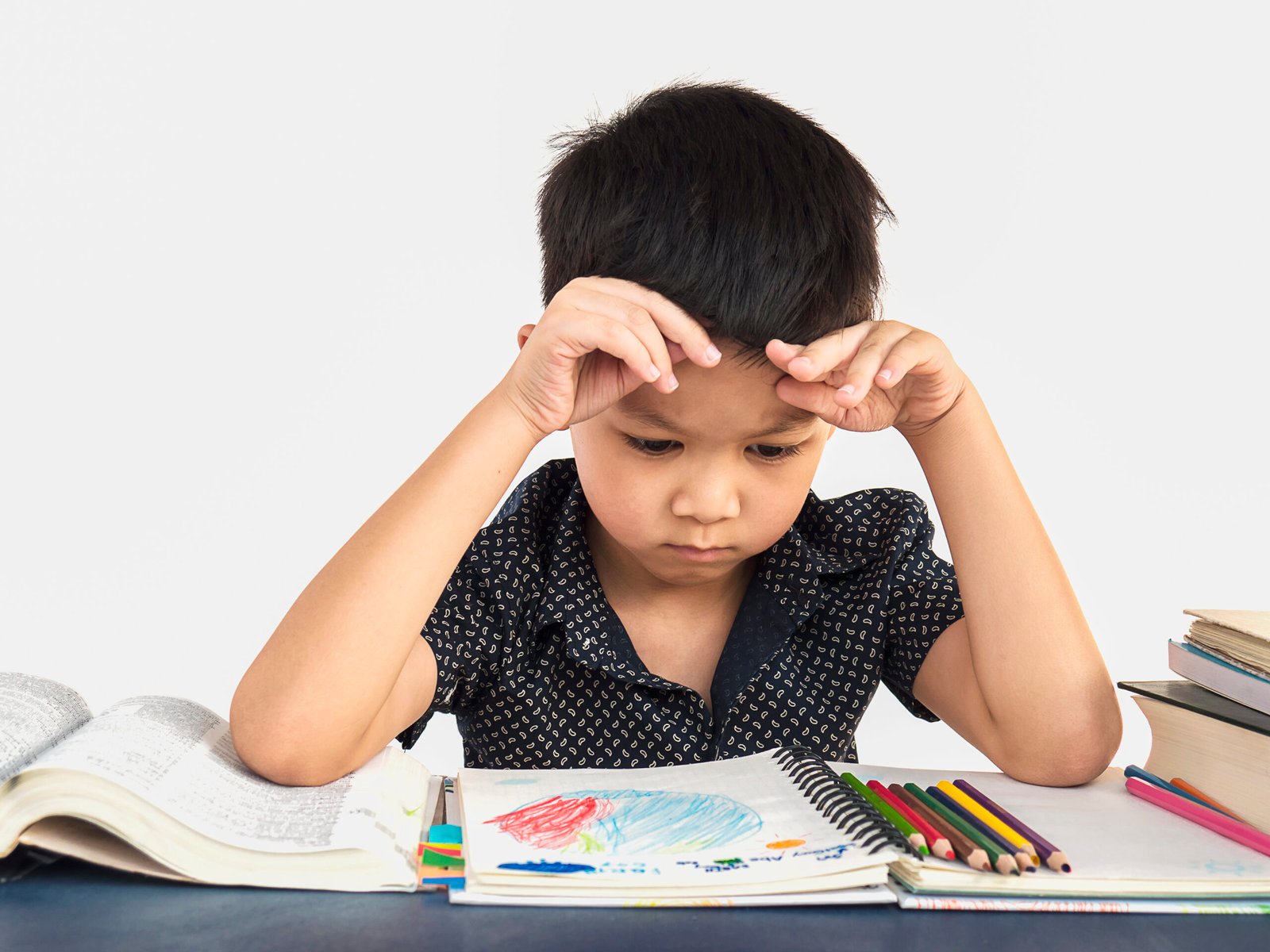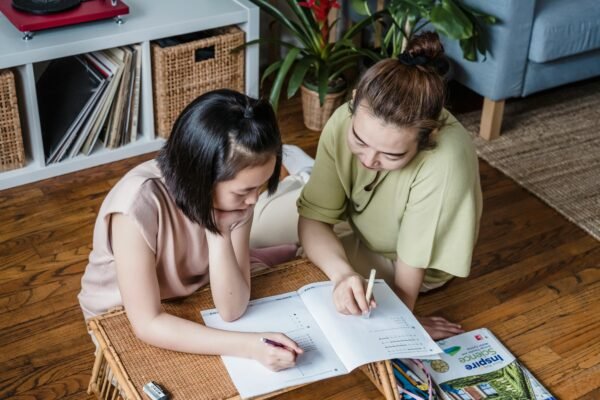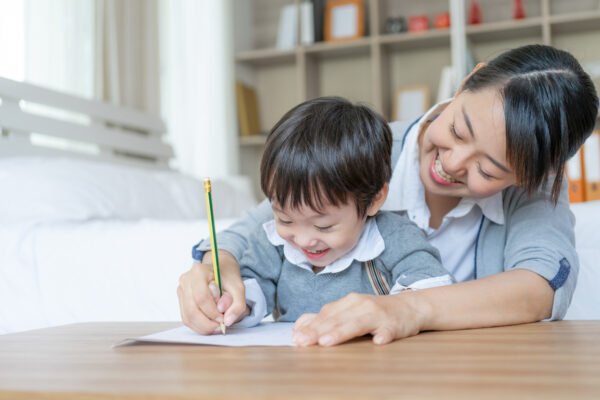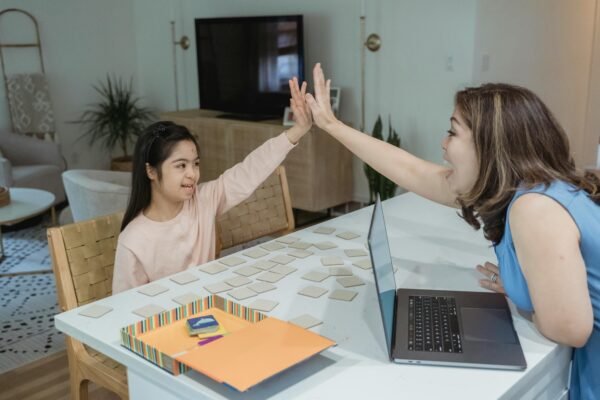5 Common Mistakes Kids Make When Learning Pinyin–And How to Fix Them
5 Common Mistakes Kids Make When Learning Pinyin–And How to Fix Them

The challenge of learning Pinyin for kids often starts with pronunciation and tone. Still, it remains the most effective foundation for Mandarin learning. As the basis for speaking and reading, Pinyin is commonly easier to learn due to its use of the Latin alphabet, bringing the similarity with English. However, non native speakers may find it challenging to learn at first–beginners are especially prone to mistakes if not guided correctly. Although these mistakes can come from a simple mispronunciation, it can be fatal during communication. Through these articles, we will discuss common mistakes while learning Pinyin to avoid misunderstandings in the future.
Common Beginners’ Mistakes While Learning Pinyin

Beginners are prone to encountering several mistakes while learning Mandarin. As the foundation of Mandarin, mistakes during Pinyin learning can completely lead someone to a misunderstanding. To avoid conflict caused by miscommunication, kids who are learning should be aware of common beginners’ mistakes while learning Pinyin as their foundation to a strong Mandarin fluency. Acknowledging common mistakes can help kids learn Mandarin effectively to ensure a smoother communication with other parties. Here are a few common mistakes while learning Pinyin that you should acknowledge.
- Doesn’t learn initials and finals
Most people who learn Mandarin are too focused on pronunciation and Chinese characters as their first step. Although learning Chinese characters is equally important and mastering pronunciation, kids who are planning to learn Mandarin should start by recognizing initials and finals. As the building blocks of Pinyin, learning initials and finals will help kids familiarize themselves with mastering how to pronounce syllables.
People who skip learning these building blocks will usually find difficulty in speaking verbally. Therefore, it is advised to start recognizing how to enunciate each initial and final properly before jumping into vocabulary and sentences.
- Ignoring tones
When trying to speak Mandarin, a lot of people tend to forget the fundamentals of Chinese tones. Although tones can easily be ignored by beginners, the ability to distinguish tones from one another is utmost important given the nature of Mandarin in general. As varying tones with the exact same spelling can lead into different meanings, acknowledging these differences can help minimize misunderstandings between one another.
- Pronunciation
One major challenge of learning Pinyin for kids lies in pronunciation—despite using familiar Latin letters, the sounds can be unintuitive. Even though Pinyin is written down with the same Latin alphabet that is commonly used globally, some of the syllables’ pronunciation can differ greatly from one another. Here’s a few common mistakes.
-
- Initials z, c, s
The initials z, c, and s are often pronounced by spreading your lips horizontally and pressing your tongue against the back of your upper middle teeth before pushing out some air. - Initial zh and ch
The initials zh and ch are often confused with z and c due to its similar pronunciation at first glance. However, your tongue position for pronouncing these two initials is slightly different. Instead of touching the back of your teeth, your tongue should be curled back to touch the upper part of your gum. - Final ü
The final ü does not exist in usual English pronunciation, so it might be tricky to learn as a non-Chinese native speaker. To produce the right pronunciation, try stretching your lips as if you’re trying to say “ee” before slowly rounding your lips. Keep your tongue in the same position when you’re trying to say “ee” with rounded lips.
- Initials z, c, s
- Not Practicing Actively
A lot of learners tend to not be able to practice actively due to the limited chance to talk in Mandarin. As you’re trying to teach kids on how to learn Pinyin, make sure to include activities that will push them to speak and pronounce loudly. These activities can help detect mistakes early and correct them as soon as possible. We have listed the best resources to actively learn Pinyin for kids in this article.
- Ignoring the Importance of Listening
Although Pinyin can be used in both written and spoken language, we can’t deny the importance of this building block in shaping verbal communication. Aside from speaking, kids who wish to learn Pinyin should get familiar with Chinese audio to help them get used to enunciating syllables. If you’re not able to find a partner for your kids to learn Mandarin with, you can opt for other options such as songs, nursery rhymes, and even interactive videos.
Pinyin vs Chinese Characters: Which One to Learn

Aside from Pinyin, Mandarin is also formed by its many Chinese characters. While learning both are equally important, young children might not have the best capacity to digest everything at once. When it comes to which one to start first, there is no single right answer. Which one to prioritize is usually based on your goal in the future. However, it is highly recommended to start with Pinyin to give a basic foundation for both reading and verbal communication. Here’s a few considerations on how to incorporate an effective Mandarin learning journey that includes both Pinyin and Chinese characters.
- Younger learners below the age of primary school are often advised to start with Pinyin as learning Chinese characters might be too early for them. For kids around primary school level, parents and teachers can start introducing simple Chinese characters with fewer strokes to help them familiarize themselves with the writing system.
- If your kids’ main focus is to speak verbally with others, learning how to pronounce Pinyin might be the best way to start. However, if you’re planning to teach your kids Mandarin for a long term, you can begin introducing Chinese characters after children understand the basics of initials and finals.
- If you’re trying to get your children to understand both Pinyin and Chinese characters, you can try pairing Pinyin with simple and common Chinese characters as part of their practice. Try using flashcards that include Pinyin, Chinese characters, and the English translation of the word to enhance effectivity in learning.
Fixing Kids’ Pinyin Tone: Communicate Smoothly and Effectively

From all 5 mistakes that have been mentioned above, Mandarin tone might be the most challenging for both kids and adults. These tones can be an extra challenge especially for non native speakers who struggle to find an expert to help correct their pronunciation. Fixing your kids’ tone is essential despite its challenging nature. Here’s several practical tips that you can implement in order to help your children learn better.
- Listen and repeat
When it comes to tone, children should get used to listening before they can implement the correct Mandarin tone to communicate with others. Therefore, parents or teachers should prioritize letting them listen and differentiate the Mandarin tones. You can try keeping them engaged by inviting them to draw the Mandarin tones with their finger in the air, letting them feel how each tone sounds before moving to the others. Another useful tip that you can try is by asking kids to pronounce the same syllables in all Mandarin tones.
- Use interactive audios
Incorporating audios from resources such as CDs or the internet is a common practice nowadays. This method is specifically recommended if you’re not a native Mandarin speaker. Using trustworthy audios will limit mistakes and misunderstanding from the learning process. To keep kids engaged, you can try playing a short clip rather than forcing them to watch lengthy videos.
- Shadowing
Kids at a younger age are known for their habit of imitating others. This habit can come in handy if you’re trying to teach and correct your kids’ way of pronouncing certain words in Mandarin. Emphasize the use of the words you wish to correct either by playing audios with the same context. Try finding audios from native speakers and encourage your kids to try imitating the audios as closely as possible to help them get more fluent in pronunciation.
- Practicing daily
Mastering Mandarin requires constant practice. When it comes to younger children learning, you cannot expect them to be fluent in several days. Try encouraging them to practice as often as possible to increase fluency. You can apply spaced repetition through engaging activities that push them to speak or enunciate syllables loudly.
- Connect with experts
Another way that you can take to fix the issue with tone correction is by connecting with experts. This method will include having a native speaker or an experienced teacher near your kids to help them speak and learn Mandarin better. If you don’t have any Mandarin native speakers near you, enrichment classes and tuition centers can act as a great substitute to provide your kids with the best Mandarin learning experience guided by experts.
Fixing Pinyin as a Foundation of Mandarin
Making mistakes during learning Pinyin is an inevitable part of learning itself. While mistakes are common, fixing these issues are equally important to ensure effective learning for the long term. To avoid making mistakes, many parents have opted to enroll their children in different courses to help them learn better. Visit our site to learn more about how we can help your children’s Mandarin learning journey.





